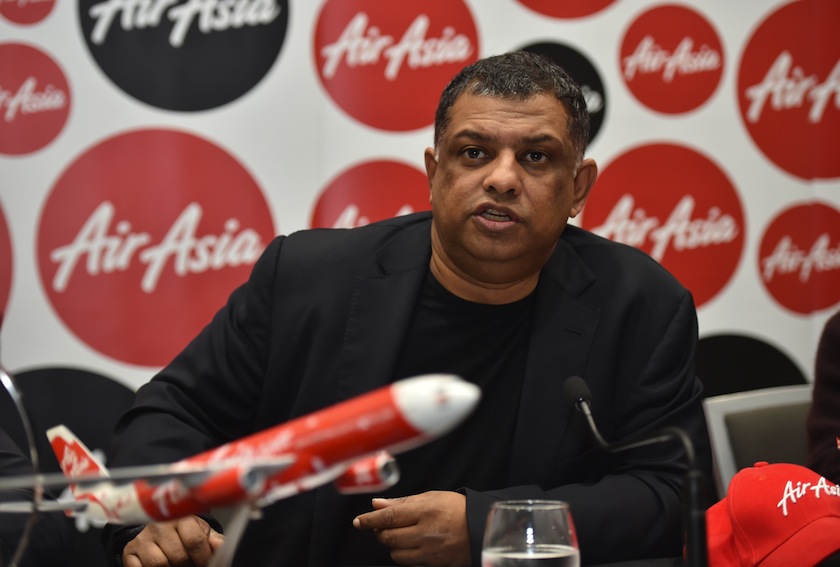KUALA LUMPUR, June 21 — AirAsia Group Bhd is waiting for approval from Bank Negara Malaysia for its new financial technology (fintech) programme, which is expected to be launched in three months’ time, said AirAsia Group Chief Executive Officer, Tan Sri Tony Fernandes.
Fernandes said the programme, dubbed as ‘The Big’, would enable banking and financial services as well as serve as a platform to process in-flight purchases for over 60 million people on AirAsia flights annually.
“This would ease the purchasing process in the future, especially when AirAsia aims to achieve a record of 100 million customers flying with us by 2021,” he said in a press conference in conjunction with 2017 Skytrax World Airline Awards yesterday.
He said at present, 25 per cent of AirAsia flight bookings were made through online platform rather than manual system.
The award ceremony was a part of the 52nd International Paris Air Show held at Le Bourget Airport, France.
On Jan. 3, AirAsia Bhd has entered the fintech pool with the incorporation of a Singaporean Big Pay Pte Ltd.
While this is the group’s first step into fintech, its BIG Prepaid MasterCard in partnership with MasterCard, which acts as a multi-currency wallet, has a virtual option and is already in use as a loyalty card by AirAsia’s frequent flyers.
Meanwhile, asked on plans for AirAsia India, Fernandes said, the company would increase the fleet size from current 10 aircraft to 20 by end-2018.
“About AirAsia India going on the international route, we plan to see more flight frequencies from a city in India and fly directly to Bali and so on,” he said.
The Indian Civil Aviation Authority has decided in 2016 to amend its 5/20 rule to 0/20 rule.
The 5/20 rule has been implied on the commercial flights which require carriers to complete five years of domestic operations and have a fleet of 20 planes to be considered for international operations.
Now an airline has to scale up its fleet up to 20 planes or deploy 20 per cent of capacity on domestic operations, whichever is higher, to qualify for overseas flying.
Following the changes in the policy, carriers are no longer needed to serve the compulsory five years of domestic operations and a fleet of 20 aircraft before an airline can start international operations.
Now, airlines can fly abroad if they deploy 20 aircraft or 20 per cent of total capacity, whichever is higher, for domestic operations.
On a separate update, Fernandes said, AirAsia would continue to focus on Asian route instead of rushing into long-haul routes.
India’s domestic air traffic market logged the fastest growth in the world for the 13th consecutive month in April 2016, of which the market grew by nearly 22 per cent during the month.
India’s domestic traffic soared 21.8 per cent, marking the 20th month of double-digit traffic growth and the 13th consecutive month it has led the domestic markets.
AirAsia Group has had aggressively expanded its network in the Asian region, of which it is in the midst of setting up a unit in Cambodia. It has also signed a memorandum of understanding to establish a low-cost carrier in China as part of its strategy to enter the Chinese market.
At the same time, AirAsia continues with the impending joint venture plan in Vietnam, while AirAsia’s newly set-up Japanese subsidiary is expected to start operations in the second half of this year.
To date, AirAsia has business in Thailand, the Philippine, India and Malaysia. — Bernama






















